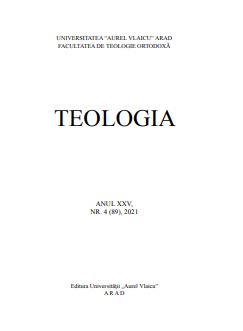The Death and Resurrection of Christ in the Rejection of Apollinarism by Saint Gregory of Nyssa
The Death and Resurrection of Christ in the Rejection of Apollinarism by Saint Gregory of Nyssa
Author(s): Vasile CristescuSubject(s): Christian Theology and Religion, Ancient World, History of Religion
Published by: Editura Universității Aurel Vlaicu
Keywords: person of Christ; nature; rational soul; will; consubstantiality; death of Christ; resurrection of Christ;
Summary/Abstract: In mutilating the unity of the person of Christ by denying the fullness of the human nature in Him, Apollinaris of Laodicea also mutilates the human image of Christ by denying His rational soul, arriving at the same conception as the Arians. In rejecting Apollinaris’ mutilation of Christ’s human image, St. Gregory of Nyssa forcefully affirmed the whole human, reason, soul and will. He also showed this with regard to the death and resurrection of Christ. In his treatise Adversus Apollinarem he shows the fallacy of the conclusion drawn from Apollinaris’ false thesis: if Christ has a soul devoid of reason, His death can no longer be presented as a human death. Furthermore, in the face of the Apollinarist claim about the separation of the Word from the body of Christ, St Gregory points out that even in Christ’s death the Word of God remains united with his body and soul. At the same time, St Gregory takes a stand against the monothelite doctrine of Apollinaris, defending Eastern teaching about the two wills in Christ. Regarding the resurrection of Christ, St. Gregory defends Eastern teaching about the active role of Christ as the subject in His resurrection.
Journal: Teologia
- Issue Year: 91/2022
- Issue No: 2
- Page Range: 25-37
- Page Count: 13
- Language: English

